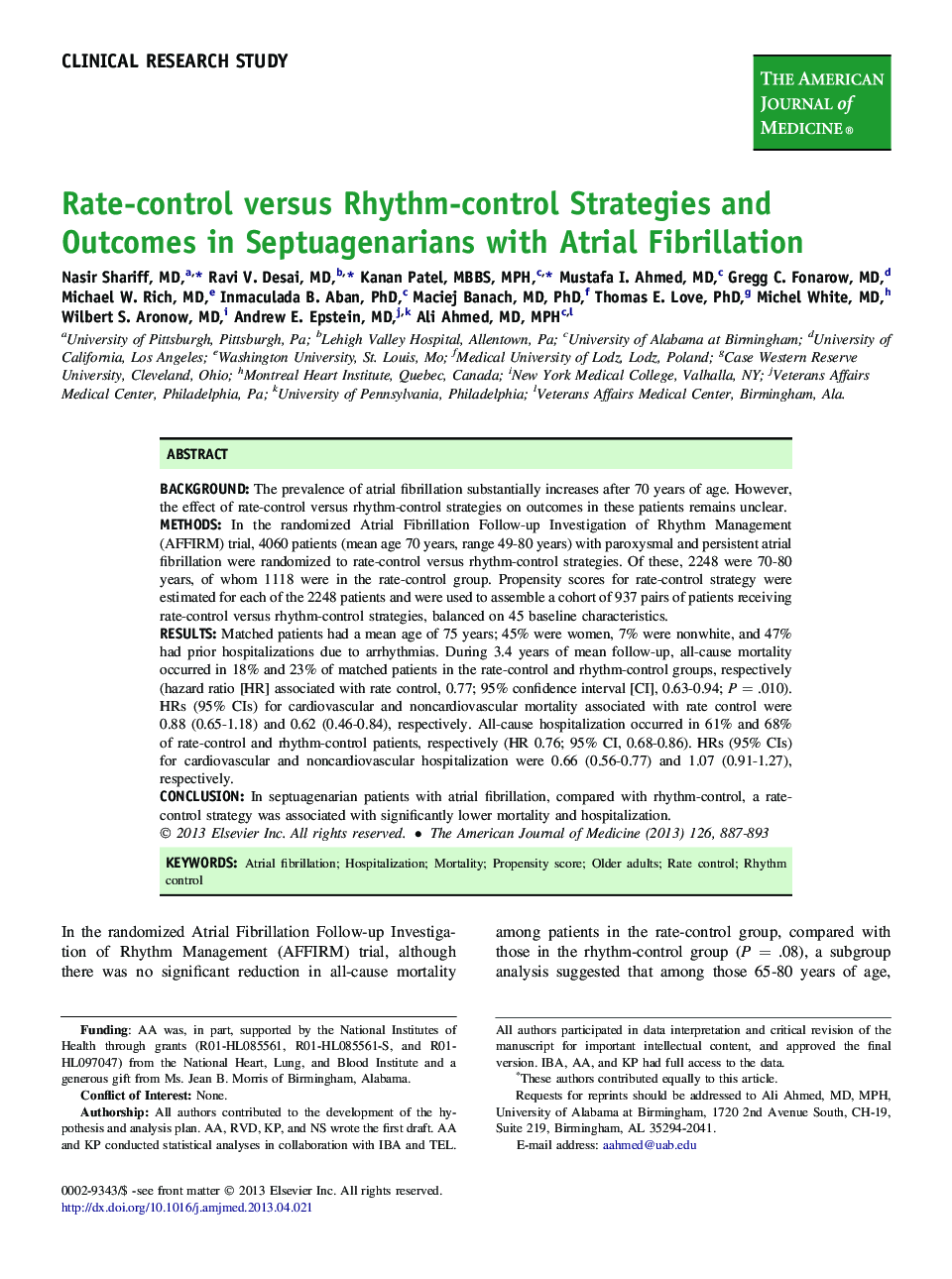| کد مقاله | کد نشریه | سال انتشار | مقاله انگلیسی | نسخه تمام متن |
|---|---|---|---|---|
| 5878531 | 1566145 | 2013 | 7 صفحه PDF | دانلود رایگان |

BackgroundThe prevalence of atrial fibrillation substantially increases after 70 years of age. However, the effect of rate-control versus rhythm-control strategies on outcomes in these patients remains unclear.MethodsIn the randomized Atrial Fibrillation Follow-up Investigation of Rhythm Management (AFFIRM) trial, 4060 patients (mean age 70 years, range 49-80 years) with paroxysmal and persistent atrial fibrillation were randomized to rate-control versus rhythm-control strategies. Of these, 2248 were 70-80 years, of whom 1118 were in the rate-control group. Propensity scores for rate-control strategy were estimated for each of the 2248 patients and were used to assemble a cohort of 937 pairs of patients receiving rate-control versus rhythm-control strategies, balanced on 45 baseline characteristics.ResultsMatched patients had a mean age of 75 years; 45% were women, 7% were nonwhite, and 47% had prior hospitalizations due to arrhythmias. During 3.4 years of mean follow-up, all-cause mortality occurred in 18% and 23% of matched patients in the rate-control and rhythm-control groups, respectively (hazard ratio [HR] associated with rate control, 0.77; 95% confidence interval [CI], 0.63-0.94; P = .010). HRs (95% CIs) for cardiovascular and noncardiovascular mortality associated with rate control were 0.88 (0.65-1.18) and 0.62 (0.46-0.84), respectively. All-cause hospitalization occurred in 61% and 68% of rate-control and rhythm-control patients, respectively (HR 0.76; 95% CI, 0.68-0.86). HRs (95% CIs) for cardiovascular and noncardiovascular hospitalization were 0.66 (0.56-0.77) and 1.07 (0.91-1.27), respectively.ConclusionIn septuagenarian patients with atrial fibrillation, compared with rhythm-control, a rate-control strategy was associated with significantly lower mortality and hospitalization.
Journal: The American Journal of Medicine - Volume 126, Issue 10, October 2013, Pages 887-893